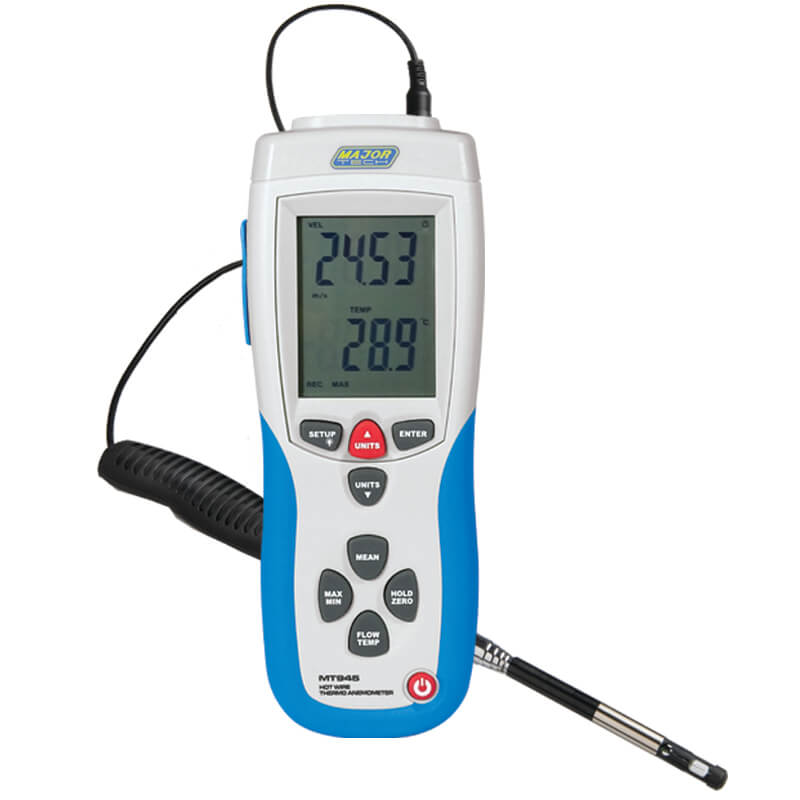How an Anemometer Can Enhance Your Weather Monitoring System
How an Anemometer Can Enhance Your Weather Monitoring System
Blog Article
Exploring the Features and Benefits of Anemometers for Weather Lovers and Experts
Anemometers stand as crucial tools in the world of climate surveillance, dealing with both enthusiasts and seasoned professionals alike. These gadgets provide a window right into the dynamic world of wind patterns and speeds, supplying vital information for meteorological analysis and forecasting. From cup anemometers to sonic anemometers, each kind brings its special set of applications and benefits, losing light on various aspects of weather. As we explore the functions and advantages of anemometers, a deeper understanding emerges not only of dominating weather condition phenomena however also of the wider ramifications for industries like wind energy manufacturing and ecological research.
Importance of Anemometers in Weather Condition Surveillance
Anemometers play a vital function in weather condition surveillance by providing exact dimensions of wind speed, aiding in projecting and understanding climate patterns. These tools, ranging from typical mug anemometers to modern ultrasonic anemometers, are vital for meteorologists, researchers, and weather fanatics alike.

Sorts Of Anemometers and Their Applications
The most common types of anemometers consist of cup anemometers, vane anemometers, hot-wire anemometers, and ultrasonic anemometers. Cup anemometers are composed of three or 4 mugs mounted on horizontal arms that turn with the wind, measuring its speed. Vane anemometers, on the other hand, make use of a freely rotating vane to align with the wind direction, giving both wind rate and direction dimensions.
Mug anemometers are suitable and durable for general weather monitoring, while vane anemometers are favored for directional measurements. Ultrasonic anemometers are non-intrusive and supply high precision, commonly made use of in study and specialized climate surveillance applications.
Advantages of Making Use Of Anemometers in Projecting
In weather forecasting, the application of anemometers offers vital benefits for improving the accuracy of weather forecasting. Anemometers gauge wind rate and instructions, giving critical data for forecasting weather condition patterns. By including wind data right into projecting versions, meteorologists can better recognize the movement of weather condition systems, prepare for adjustments in climatic conditions, and problem a lot more exact projections.
Furthermore, anemometers play a vital role in analyzing possible weather hazards. Keeping an eye on wind rates aids forecasters anticipate extreme weather occasions such as typhoons, hurricanes, and site link wintertime tornados with higher accuracy. This early caution system enables authorities to release prompt alerts and carry out essential security measures, minimizing the dangers to life and residential or commercial property.
Additionally, anemometers assist in enhancing renewable resource production. By examining wind patterns, meteorologists can determine ideal areas for wind ranches and forecast power output, adding to the efficient generation of wind power.

Anemometers in Wind Energy Manufacturing
Given the important duty anemometers play in giving precise wind data for climate forecasting and danger analysis, their relevance includes the world of wind energy manufacturing. Anemometers are important tools in the field of wind power, where the dimension of wind rate and instructions is crucial for figuring out the feasibility and performance of wind generator setups. By properly measuring wind rates at differing heights, anemometers assist optimize the positioning and style of wind generators to maximize power output.
In wind ranches, anemometers are purposefully placed to collect real-time wind data that is used to examine the possible power manufacturing of a website. This data is instrumental in establishing the financial stability of wind energy tasks and in forecasting energy generation to guarantee grid security. Furthermore, anemometers help in checking wind conditions to maximize wind turbine efficiency, stop damage from high winds, and guarantee the security of employees operating in the area of wind turbines.
Enhancing Weather Condition Recognizing With Anemometers

Anemometers play a key duty in boosting our understanding of microclimates. These local climate condition can vary substantially from wider local forecasts, making it important to have accurate information for certain areas. anemometer. By strategically placing anemometers in different places, researchers can collect in-depth details on just how wind acts in different terrains, city settings, or bodies of water
Additionally, anemometers add to boosting weather condition forecasting versions by giving real-time data on from this source wind actions. This details is particularly useful for predicting serious weather condition events, optimizing agricultural techniques, and supporting industries like aeronautics and maritime navigation. Overall, anemometers are important tools that allow us to dive deeper into the intricacies of weather condition systems, inevitably causing even more better-informed decisions and accurate forecasts.
Final Thought
In conclusion, anemometers play an essential function in weather surveillance and projecting by measuring wind speed and instructions. They are visit this site right here crucial devices made use of by weather condition fanatics and experts to collect exact information for predicting weather patterns and evaluating potential influences. Anemometers also have applications in wind energy production, further highlighting their relevance in both meteorology and renewable energy sectors. Generally, anemometers add to boosting our understanding of climate phenomena and improving projecting abilities. anemometer.
From mug anemometers to sonic anemometers, each type brings its special collection of applications and advantages, dropping light on numerous elements of atmospheric problems. These tools, ranging from standard mug anemometers to modern ultrasonic anemometers, are vital for meteorologists, scientists, and climate fanatics alike. The most common types of anemometers consist of mug anemometers, vane anemometers, hot-wire anemometers, and ultrasonic anemometers. Mug anemometers are appropriate and robust for general climate monitoring, while vane anemometers are favored for directional measurements. Anemometers are important tools in the area of wind power, where the measurement of wind rate and direction is critical for identifying the feasibility and performance of wind generator setups.
Report this page